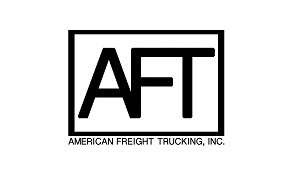Ontario expands and improves LCV program



read more
...Read the rest of this story
General Motors showed off a variety of Chevrolet and GMC pickup trucks and vans at the 2017 Washington Auto Show,as well as its 3.6-liter DI DOHC VVT gasoline engine, which took home Ward's 10 best engine honors last year. (All photos by Sean Kilcarr for Fleet Owner)
...Read the rest of this story
At the 2017 Washington Auto Show, General Motors and the U.S. Army showed off the Colorado ZH2: a fuel cell electric vehicle (FCEV) prototype based on the Chevrolet Colorado mid-sized pickup truck platform that runs on electricity generated by a hydrogen-powered fuel cell. It'll undergo battlefield testing at Fort Carson, CO, this June and at Fort Bragg, NC, in August.
read more
...Read the rest of this story
Photo: Jim Park
">Photo: Jim Park
">This probably will not come as a big surprise to most fleets, but emissions-related components are the fastest growing sector of the heavy-duty aftermarket, according to John Blodgett, vice president, sales and marketing for market-research firm MacKay & Co.
Speaking at the recent Heavy Duty Aftermarket Dialogue event in Las Vegas, Blodgett said that since 2010 aftermarket demand for these components has increased 254%. In addition, he and David Kalvelage, manager of IT and database services at MacKay & Co., expect that by 2021 that demand will increase another 42%.
In their presentation “Structure and Trends of the Current Heavy Duty Aftermarket,” the duo recapped what happened in the aftermarket in 2016 and offered some thoughts on what might occur in the future.
Another emissions-related trend they are seeing is the shift from fleets getting diesel particulate filters cleaned on a local level toward switching to factory-remanufactured products.
However, they are also seeing a shift from remanufactured parts to new products for starter and alternator replacement based largely on the price equity of the new parts, which are primarily coming from offshore sources.
Looking back to 2016, the U.S. heavy-duty aftermarket was down 1.5%, mostly as a result of lower utilization and pricing adjustments. The Canadian aftermarket grew 7.4%, but Blodgett was quick to point out that this did not mean unit sales were higher. Rather, exchange rates accounted for most of the increase.
Turning to the service side of the aftermarket, MacKay's data shows 68% of first owners of vehicles are performing their own service, with dealers doing 18% of service and independent garages doing 14%.
However, while subsequent owners still do much of their own work, when they outsource they use dealers less often compared to first owners. Independent garages are the ones getting the additional work from fleets. ...Read the rest of this story
Photo: ATD
">Photo: ATD
">Robert Nuss, president of Minnesota-based Nuss Truck Group, has been named the 2017 Truck Dealer of the Year by the American Truck Dealers, Heavy Duty Trucking magazine and Procede Software.
Nuss received the award on Jan. 27 during the 2017 ATD Convention & Expo,in New Orleans, La. Nuss Truck Group, which is based in Rochester Minn., offers Mack Trucks, Volvo Trucks, Isuzu Commercial Trucks, and Volvo Construction equipment.
Nuss has served on the Mack Dealer Council as its chairman and it was noted that he actively gives back to the community through involvement in local charitable organizations, such as the Rochester Area Foundation, Rochester Boys & Girls Club, Seasons Hospice, and others.
He was one of five nominees for the Truck Dealer of the Year award, which honors excellence in business practices, industry leadership and community service. Faculty members from Indiana University's Kelley School of Business choose the winner.
All nominees were selected by state, metro and national association leaders. The other four nominees for the 2017 Truck Dealer of the Year award were:
James D. Carello, president of Regional International Corp. in Henrietta, N.Y.Katie Hopkins, executive vice president of Truck Centers, Inc., in Troy, Ill.Gary G. Nicholas, president/CEO of Nicholas-Wyoming Valley Truck Sales, Inc., in Luzerne, Pa.Zach Wagner, CEO of Gateway Truck & Refrigeration in Collinsville, Ill.Read what all five nominees have to say about dealer trends affecting fleets in the February issue of Heavy Duty Trucking magazine.
Related: Tom Bertolino Named 2016 Truck Dealer of the Year
Follow @HDTrucking on Twitter
...Read the rest of this story